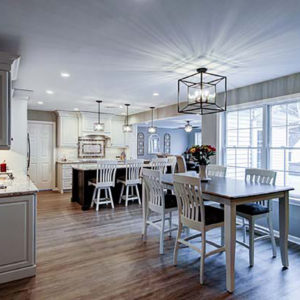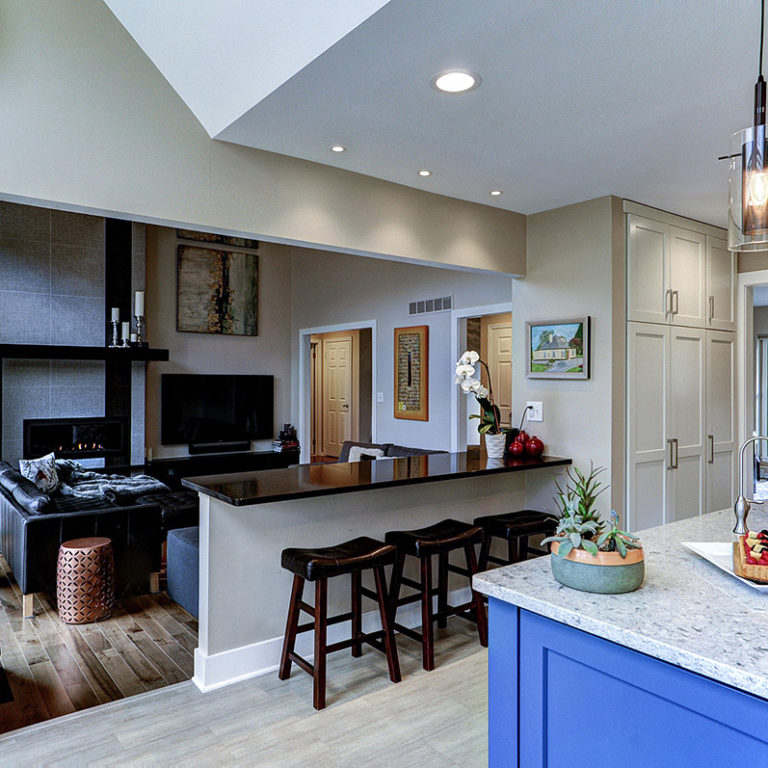Do you have a lengthy list of home renovations you’d like to get started on? Feeling paralyzed on where to start or how to prioritize projects based on the overall investment you’d like to make? You’re not alone! This is a challenge that many of our clients face – and one that we’ve solved many times! We’re here to help.
Deciding to officially kickstart a home renovation project can feel intimidating, especially if you’re facing doubt on whether or not you can make the investment to get it all done. The good news is that it doesn’t have to be an intimidating process or difficult to prioritize based on your budget. We have several key factors you should consider, which will help you determine where to start based on your unique circumstances and budget

How to Prioritize Your Home Renovations
Determine the size of your investment
Right from the start, it’s important to know how much you can invest in your home and let that help dictate which project you start with. Remember, a home renovation is not just any other “expense.” It’s an investment not only in your family but also in the value of your home, should you consider moving in the future. However, if you know from the get-go that you can’t currently afford the kitchen remodel you want, but you can afford something smaller, you’ll avoid wasting time and energy thinking about that big project that you just can’t swing.
Tidy Up
Clean up your home! In and out! It will give you a better picture of which area(s) need the most work. While you’re at it, prepare to get your pets and kids out of harm way during the renovation.
Prioritize urgent needs
Is something leaking, or is there an underlying problem that needs to be solved to avoid damage? Determine what is actually urgent or necessary to improve the functionality of your home. For example, the bathroom shower tile is damaged and needs to be replaced. Maybe it’s time to prioritize the master bath renovation that you’ve had on your mind.
Strategize & think ahead
Think through renovations you might want to do with adjoining spaces, or as add-ons to a certain project. It’s a red flag not to think this one through. Will one project impact another? For example, you want to remodel your kitchen, but know that you also want to remodel the upstairs master bath at some point. If the master bath is above the kitchen, you may want to design this space ahead of time, so any plumbing changes can be planned out while the kitchen is under construction. Another example is perhaps you need new flooring in the kitchen, but know you also want to open up the floor plan to connect it with the dining room. It would make sense to prioritize the entire kitchen and dining remodel, to avoid having to redo brand new flooring that you just installed.
Know your pain points
Is there a part of your home that’s creating significant frustration? Consider the functionality of your home based on your unique circumstances. Where do you spend most of your time? Do you have children? Maybe you don’t have a space to store shoes, coats, and bags, so they end up scattered in the family room. To combat the issue, maybe you prioritize this project and remodel the laundry room or mudroom to help alleviate that stressor.
Determine your length-of-stay
Are you planning to move out of your current home any time soon? If so, think about which projects would increase your home value, and start there. This will help make your house easier to sell or increase its value. This ensures that the renovations you prioritize will benefit you over the long term.
Consider seasonality
Is there something you want to update or build for use during the next upcoming season? Perhaps you’d like a better view of your backyard from the kitchen, in time for the beautiful fall weather and natural scenery. Or maybe you’ve been thinking about installing a fireplace for the winter. Start seasonal renovations before the season you have in mind, to ensure it’s ready for you to enjoy!
We hope you’ve found this guide helpful! If you’d like to speak with us directly to do an even deeper dive into how to prioritize, or if you’re ready to kick off a project, please contact us! You can also check out our home remodeling cost guide to help determine the investment you can afford. no


